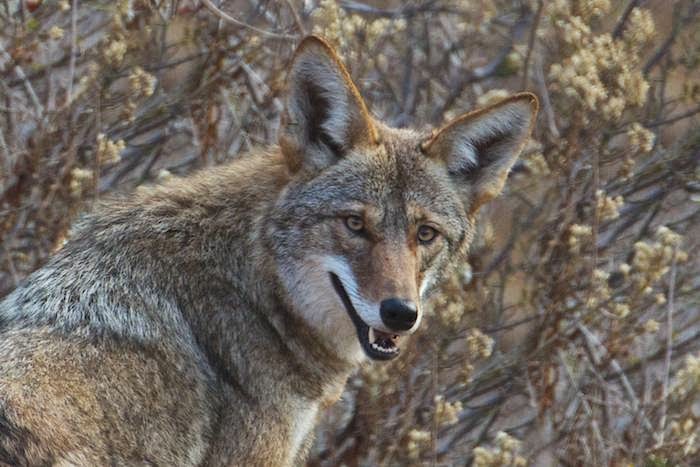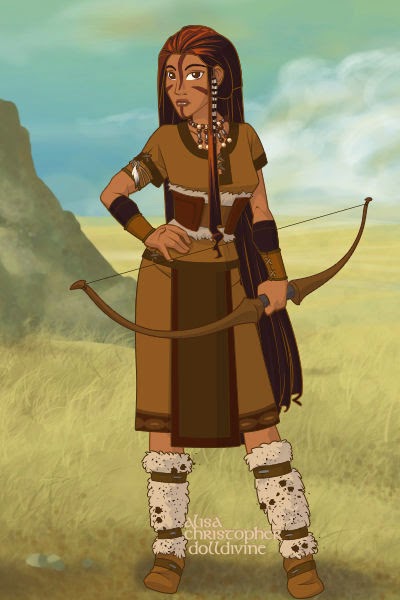Hi dear friends and followers. Today we visit the legends of the Ute.
The following legends come from the plains-dwelling Utes. The first one, Two Fawns and a Rabbit, appears to explain how and why deer live and eat as they do. The second, Bear and Puma, has the quality of a story told by the fireside to a captive audience to pass the time on a freezing cold January night. Enjoy the legends!
Two Fawns and a Rabbit
Two young Fawns sat on the ground talking about their condition. They were two boys without a mother. "We used to have a deer for our mother," they said. Rabbit came to them and said "I'm hungry. I've travelled without eating, and I've come a long way."
The Fawns said, "We have nothing to eat here; our food is not here." Where is it?" asked Rabbit. "It is not here, I say to you again," said one Fawn.
Rabbit said, "Tell me where it is, I am hungry and I want to eat." He continued talking about the Fawns' food for a long time. But they concealed from him how they obtained it.
Then Rabbit said, "I think you both are too lazy to get the food. Show me the path and I will go after it; I will cut off enough for all of us and bring it here."
Rabbit said, "Tell me where it is, I am hungry and I want to eat." He continued talking about the Fawns' food for a long time. But they concealed from him how they obtained it.
Then Rabbit said, "I think you both are too lazy to get the food. Show me the path and I will go after it; I will cut off enough for all of us and bring it here."
"But we never eat here," the Fawns said. Rabbit said, "You boys do not know me. I am your grandfather. You did not recognize me; that is why you hid your food from me." The one boy nudged the other and whispered to him, "I think he is our grandfather; I will tell him where we eat."
For a while, the other boy said nothing. Then he spoke up and said, "What we eat is not on the ground; our food is far up in the sky; and we eat at a certain time. When we ask for our food, something always comes down from the sky; it is white like a cloud. At the end of the cloud it's like a person; it has an eye, a mouth, and it watches us. It comes only at a certain time. If we ask before time, it will think someone else wants our food. But when it's time for us to ask for it, we will hide you out of sight." Then they hid him.
One ran toward the East, the other toward the West; then they ran toward each other. When they met, they cried like young animals at play. They circled about, met each other again, crying, and gradually came nearer to the tent. Something white came down from the sky. Rabbit saw it coming. It looked like a cloud with a face above it; like a man sitting on their food.
The boys took up dull knives, and when the food arrived, they cut off a piece. They cut more than usual, so there would be enough for their grandfather. Then the cloud flew upward as fast as lightning.
The Fawn boys cut up their food and called Rabbit to come out and eat with them. The food tasted good and sweet, and Rabbit wanted more and asked the boys to make the thing come again. The Fawns said, "But it only comes at set times." Rabbit replied, "I will live with you, for your food is very good." He made a burrow in the brush nearby and watched.
The food did come down again. The person riding on it looked around like an antelope watching. Rabbit took a bow and arrow from his quiver. Just before the cloud came low enough for the boys to cut off another piece of food, Rabbit shot at the manlike object on the cloud. The white object fell down in a heap.
The Fawn boys cut up their food and called Rabbit to come out and eat with them. The food tasted good and sweet, and Rabbit wanted more and asked the boys to make the thing come again. The Fawns said, "But it only comes at set times." Rabbit replied, "I will live with you, for your food is very good." He made a burrow in the brush nearby and watched.
The food did come down again. The person riding on it looked around like an antelope watching. Rabbit took a bow and arrow from his quiver. Just before the cloud came low enough for the boys to cut off another piece of food, Rabbit shot at the manlike object on the cloud. The white object fell down in a heap.
"I thought that was what it would do," said the older brother to the younger, as if blaming him. Rabbit said to them, "Well, my grandchildren, I will leave you now. You have something to eat and it will last you a long time. After you have consumed all of it, you will go to the mountains and eat grass and become Deer."
Puma and the Bear
One day Puma took his son hunting with him. The Bear came to Puma's tent and saw his wife there, and immediately fell in love with her. "I wish to have her for my wife," he thought. Then he went in to where she was sitting. In only a short time, he proposed that she run away with him. She consented and ran away with the Bear.
When Puma returned, he could not find his wife. "I wonder if she could have eloped with that Bear?" he mused. At first he and his son saw no tracks, but eventually they picked up the couple's trail. Angry by now, Puma followed the Bear tracks.
A high wind began to blow, obliterating most of the tracks. The next day Puma found them again and followed on. "Perhaps they are in that cedar wood," he thought. As he moved closer, he heard voices and recognized his wife's and the Bear's.
He sent his son to circle the wood, approaching from the other side of the wood to force the Bear out toward Puma. The woman said "Puma is very strong." "But I am stronger," said the Bear, seizing a cedar tree and pulling it from the ground. "He is stronger than that," said the woman.
The Bear had his moccasins off when Puma's son attacked. Quickly the Bear put on his moccasins, but in his haste he put them on the wrong feet. Then, not knowing who was coming behind him, he ran forward into Puma. The two grappled and Puma threw the Bear to the ground. The Bear rose up again and charged at Puma, who thrust the Bear down against a rock and broke the Bear's back.
Then Puma sent his wife away into the woods, letting her know that he did not want her for his wife again. Puma and his son left on another hunting trip to find a new wife and home for themselves.
Thank you very much again, dear friends, for visiting my blog. Please share your thoughts with us, if you will. have a great Week.
Thank you very much again, dear friends, for visiting my blog. Please share your thoughts with us, if you will. have a great Week.
✿ ڰۣ❤In Loving Light from the Fairy Lady❤ڰۣ✿











.gif)























.gif)








